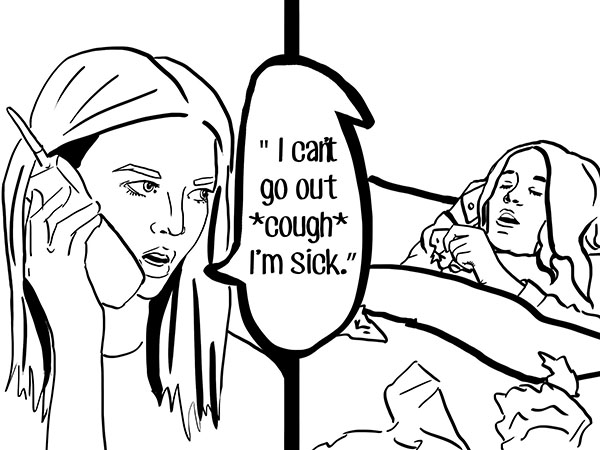A fact: Empty seats are more common on test days. Another fact: Those absences are often excused and dismissed as “Health,” implying a student is sick. Because the administration at Palo Alto High School accepts “Health” as the only valid reason for an absence, parents, with the intention of helping their students, often contact the attendance offices stating that their child is sick when the student is actually at home studying for a test or finishing an essay. Parents’ willingness to lie for their children is demonstrated by attendance data published in The Paly Voice, which showed that almost half of seniors who skipped school on the annual “Senior Cut Day” last year were excused by their parents as a health-related incident.
At the same time, the winter season continues in full throttle, many empty seats belong to students who are actually sick. For those students, a few pages of make-up work can become a thick stack within a few days. However, some teachers become less willing to make accommodations or grant extensions when they assume that all students are staying home to work on school assignments. Given the already strict district make-up policies, sick students are at risk of falling despairingly behind.
We believe both cases are problematic. Students who stay home sick in either situation should not be festering with anxiety about make-up work and studying through illnesses in order to keep up with their classes. Given the Palo Alto community’s focus on improving mental health, we should promote policies that reshape the culture at Paly so that students no longer view claiming to be “sick” as their only option to ace a test or project.
For students who have been absent due to sickness, teachers need to be more accommodating with their policies when they know that a student is responsible and dedicated to his or her studies. The current policy is one make-up day per sick day. However, one day is barely enough time to complete a normal amount of homework. When sick students are expected to complete both the current and missed assignments upon their return to school, catching up in one day per sick day is an impossible feat. As a general policy, students should be allotted two days per sick day to complete essential assessments.
Teachers should also exempt students from certain assignments that are not crucial to the class. Such policies would allow students to focus on recovering instead of feeling pressured to return to school with a fever or to complete assignments during their absence.
To keep students from being “sick” on test days, more teachers should implement policies to reduce the stress related to each exam. For example, some Economics teachers drop their students’ lowest test score at the end of the semester, diminishing the pressure of acing every test. If a student is actually sick, he or she doesn’t have to make up the test; that test simply becomes the lowest grade and is dropped at the end of the year. And students who would normally feign sickness on test days are discouraged from such activity since the possibility of a decent grade is more appealing than an automatic zero that uses the student’s only drop. Similar policies, such as the “do not count” policy for two quizzes per semester in AP United States History, can also help students reduce absences due to stress and exhaustion.
Most importantly, students and teachers need to communicate more. If an individual is sick, they should explain their situation, whether by email or in person, and construct a plan with their teacher to pace the completion of missed assignments upon their arrival back to school. Instead of complaining only to peers, students feeling overwhelmed with the work load or with multiple tests on the same day should let their teachers know and try to find a solution. All teachers would like to see their students succeed. Let them know how to help.



